
Find VA−VB
VA−iR−E=Va
VA−VB=iR+E=4+10=14 volt
Topper's Solved these Questions
- BOOK - MOTIONCHAPTER - CURRENT ELECTRICITYEXERCISE - EXERCISE -1 (SECTION -A Definition of Current , Current Density , Drift Velocity )8videos
CURRENT ELECTRICITY
- BOOK - MOTIONCHAPTER - CURRENT ELECTRICITYEXERCISE - EXERCISE -1(SECTION B- Resistance & resistivity , Ohms law +VI (Volt - curr.) Characteristics + Colour Code + Temp . Dependence8videos
CURRENT ELECTRICITY
- BOOK - MOTIONCHAPTER - CURRENT ELECTRICITYEXERCISE - EXERCISE -3 SECTION -B (PREVIOUS YEAR PROBLEMS JEE MAIN)42videos
CURRENT ELECTRICITY
- BOOK - MOTIONCHAPTER - CONSTRAINED MOTION EXERCISE - EXAMPLES12videos
CONSTRAINED MOTION
- BOOK - MOTIONCHAPTER - ELASTICITYEXERCISE - EXERCISE -360videos
ELASTICITY
Similar Questions
Find the potential difference between the points A and B (VA−VB) as shown in figure. (Initially all the capacitors are uncharged)
 View Solution
View SolutionA uniform electric field E exists in a region of space. Refer to the given figure for the location of three points A, B and C.
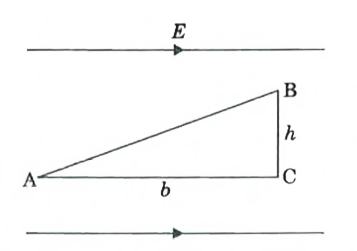
Find: (a)VB−VA (b)VC−VAView Solution
Knowledge Check
- Question 1 - Select One
Find VAB
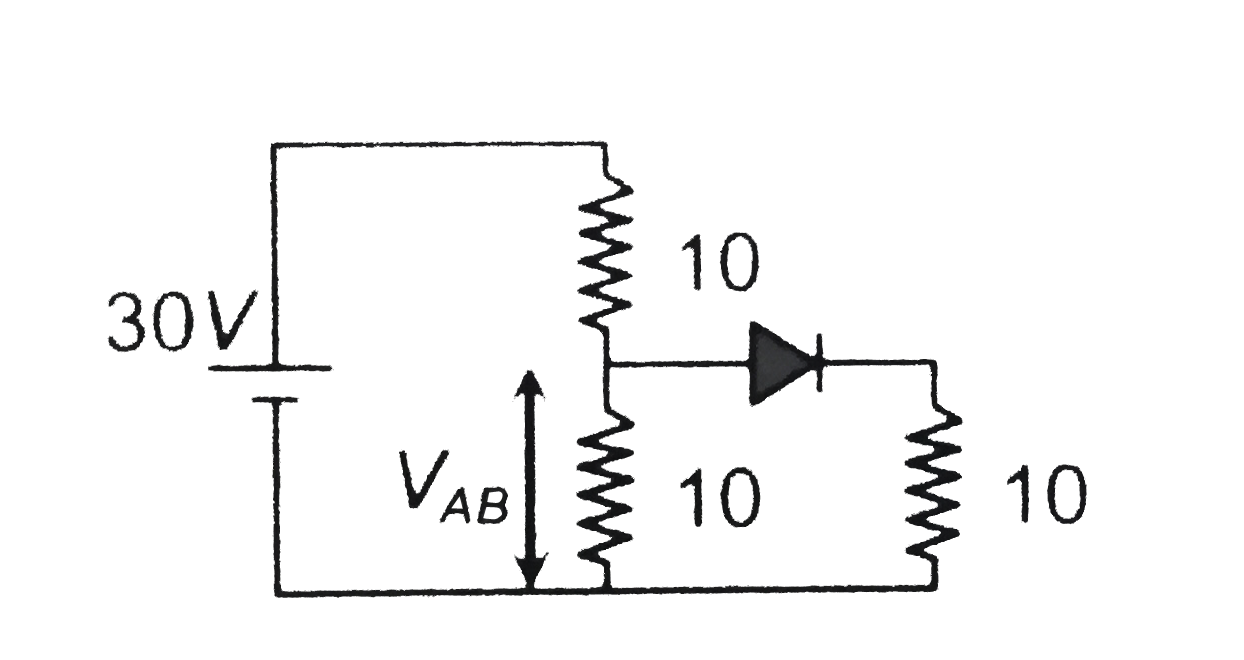 A10VB20VC30VDNone of these
A10VB20VC30VDNone of these
In the circuit shown, charge q varies with time 't' as q=t3−t2+4t, where q is in coulombs and time 't' is in second. Find VAB(VA−VB) in volts at time t=1 sec
 View Solution
View SolutionConsier the following system & find VC−VA
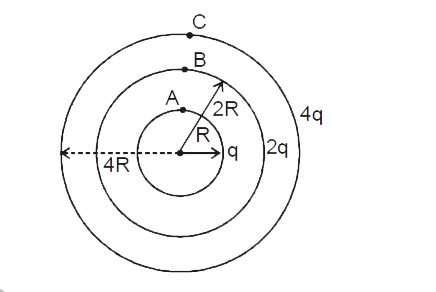 View Solution
View SolutionFind the potential difference VA−VB between points A and B of the circuit shown in.
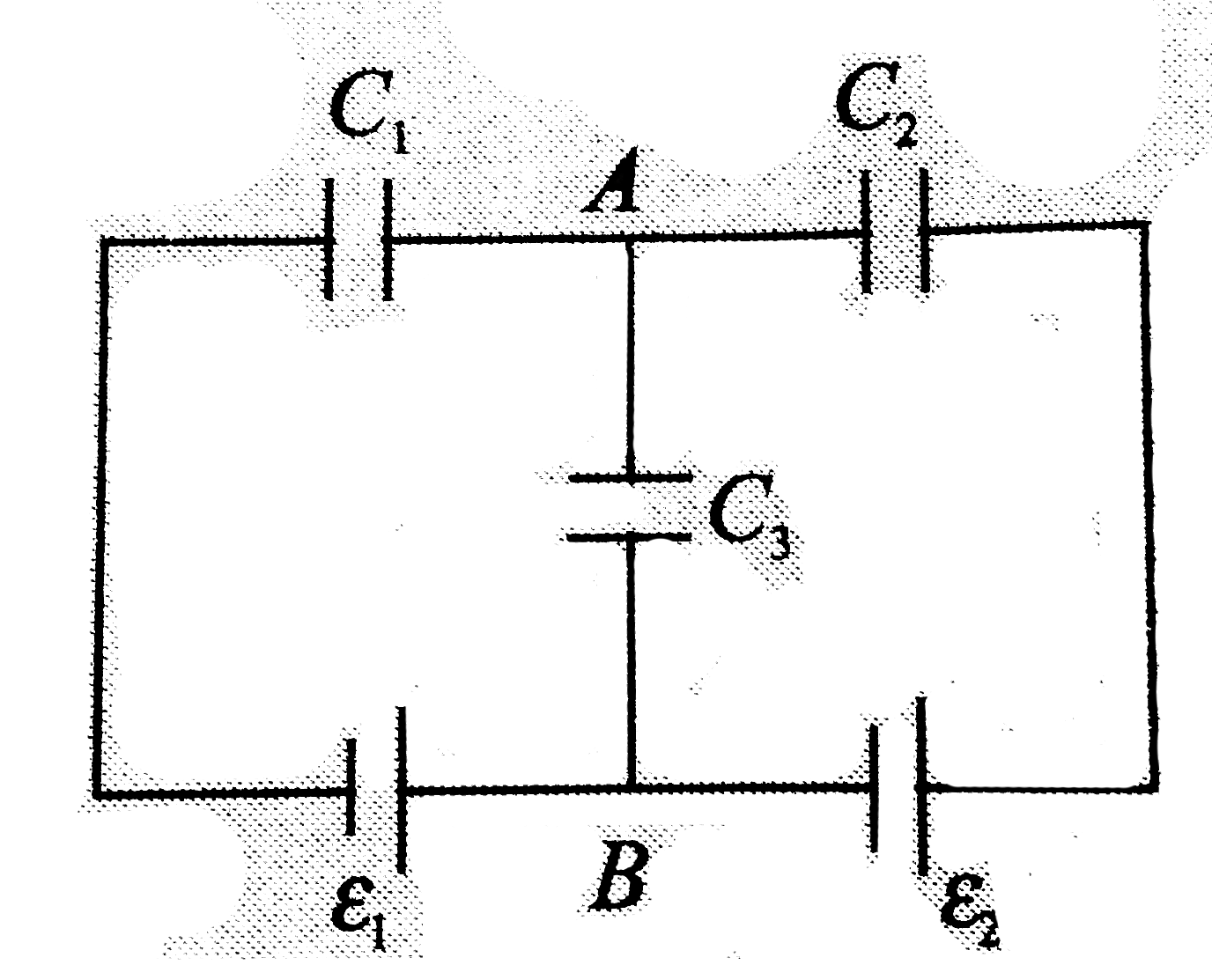 . View Solution
. View SolutionA uniform electric field exists in a region of space. Potential at potential O,A,B and C are V0=0 and VA=−1V,VB=−6V and VC=−3V respectively. Alll the cubes shown in fig have side length of 1m. ltbr> (a). Find VP−VQ
(b). Find the smallest distance of a point from O where the potential is −2V
 View Solution
View SolutionFind the potential difference between points A and B (VB−VA) in the network
 View Solution
View SolutionAn infinite thin non - conducting sheet has uniform surface charge density σ. Find the potential difference VA−VB between points A and B as shown in the figure. The line AB makes an angle of 37∘ with the normal to the sheet. (sin37∘=35)
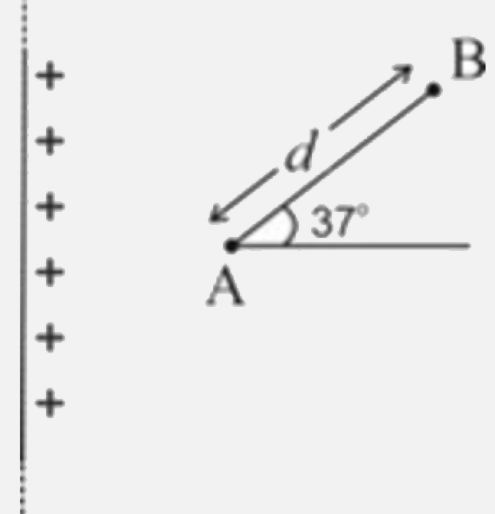 View Solution
View SolutionIn the circuit shown in the figure, the potential difference between points aandb is Va−Vb=4V. Find the emf, E of the battery.
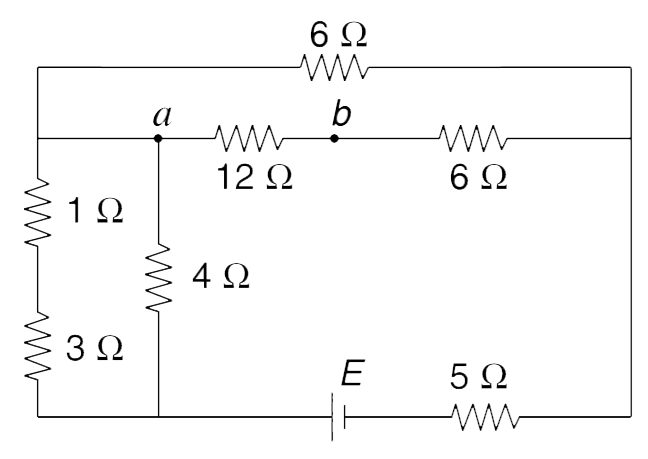 View Solution
View Solution

